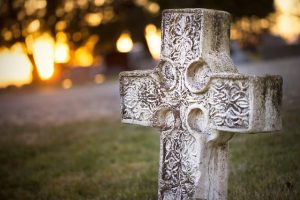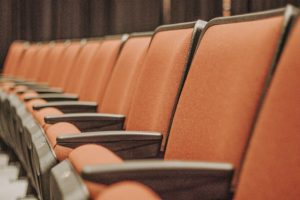
The 2015 conference in Glasgow marks the biggest and most prominent cultural heritage event to take place in Scotland. The conference organizers, the European Association of Archaeologists (EAA) put special effort into shaping the first-of-its-kind gathering hosted by the University of Glasgow.
The event took place in September and gathered more than 2,500 archaeology professionals from around the entire world. It was a significant occasion to discuss topics of importance from within the field. Besides, it was a unique chance to showcase Scotland’s diverse and intriguing cultural legacy in front of a wide international audience.
The present fan page of the EAA Glasgow 2015 Conference aims to give you a detailed review of this milestone event. It has been created by archaeology enthusiasts who firmly believe in the importance of EAA’s work and aspire to gather both local and international recognition for the Association’s endeavors.
As the EAA Glasgow 2015 has been the first, largest, and most successful attempt to promote Scotland’s influence in archaeology and to turn Glasgow into a center of global archaeological significance, we have devoted this special fan page to it. Keep reading below to learn more about the EAA Glasgow 2015 Conference and how it has impacted cultural heritage and archaeology in Scotland and abroad.
About the European Association of Archaeologists (EAA)
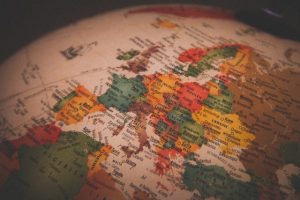
Before we go on to discuss the 2015 Glasgow conference, we need to first examine what the European Association of Archaeologists (EAA) is and how it functions. EAA is a not-for-profit organization, which is membership-based. It seeks to connect and unify archaeologists and other relevant experts and professionals. The EAA members come from Europe and beyond, and they all work together to promote global cultural heritage and the interests of archaeology.
EAA was established in 1994. Its inaugural meeting took place in Ljubljana, Slovenia. That was when the Association had its Statutes formally approved. The Council of Europe recognized officially EAA in 1999.
Throughout the years, EAA has had more than 15,000 members from 75 countries. It is headquartered in Prague, Czech Republic. The most important EAA event is its annual conference. The Association also issues several periodical publications. These include:
- The European Journal of Archaeology, which is its flagship publication
- The European Archaeologist (TEA), its in-house newsletter
- Themes in Contemporary Archaeology and Elements: The Archaeology of Europe, a monographic series
In terms of governance, the EAA is ruled by an Executive Board. Board members are elected by those who are full members of the Association. The Executive Board consists of six ordinary members and four special statute members. The latter include:
- The current president
- The incoming president
- The treasurer
- The secretary
The mission of the EAA is to promote international cooperation in the areas of archaeology and cultural heritage through fieldwork and interactions with affiliate organizations. The Association grants awards based on their relevance to its activity and goals.
EAA Glasgow 2015 Themes
The EAA Glasgow 2015 Conference touched upon a variety of topics. The discussions, lectures, and presentations were organized into six distinct categories. These were the following:
Archaeology and Mobility
The first topical area under the name of “Archaeology and Mobility” aimed to address the economic, social, and environmental challenges Europe faces in the 21st Century and their role in cultural legacy and archaeology.
According to the experts, the theme of mobility and archaeology had to be put up for scrutiny because of the following aspect: During the past couple of decades, mobility has come to signify not only the physical and geographical movement of humankind, but also any migrations that people perform on social, economic, and cultural basis.
The movement of knowledge and ideas has been a growing subject of mobility too. Whether for good or bad reasons, or through innovation or necessity, intellectual mobility has had a major impact on civic cohesion, identity formation, and social integration.
Recognizing Identities
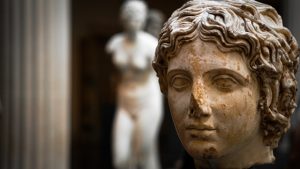
Closely connected to the first topical area is the next one called “Recognizing Identities”. Identity has always been a huge part of cultural heritage and archaeology. Whether it be individual or nation-state identity, this concept is of utmost significance in society. After all, aspects of the human being such as the sense of belonging, forming the collective group level, and articulating unique individualizing traits all belong to it.
Nowadays identity has many connotations and can be surrounded by controversy and ambiguity. Therefore, the organizers of the EEA Glasgow 2015 Conference recognized the need to place identity within the larger context of heritage policy. The modern-day identification of cultural value and ownership of identity was also treated with special attention during the event.
Last but not least, within the “Recognizing Identities” theme, the discussion also treated with priority the wider professional and disciplinary identities within the field of archaeology and cultural heritage-related occupations.
The topic invited the conference participants to deliberate on applying the abundant and diverse connotations of identity within the context of archaeological legacy. It urged them to formulate new questions and examine how identity has been reconfigured and calibrated to fit the past and the future.
Science and Archaeology
Science has always been a major tool in advancing archaeology. Its applications have been extremely varied. Hard science has impacted the field for a long time. Some of its uses include organic chemistry and isotope analyses, to name just a few. It has evolved significantly in fields such as mobility and prehistoric diet.
That said, the use of science and its inventions has not always been smooth. For instance, uninformed and misguided application of scientific techniques can lead to drawing incorrect conclusions. What is more, valuable archaeological resources could be lost, thus compromising cultural heritage narratives and preventing us from discovering the truth about our past.
The “Science and Archaeology” panel aimed to address such problems and help both scientists and archaeologists advance their knowledge and skills in the area.
Communicating Archaeology

As our society and technology evolve, how we communicate changes too. Archaeologists and cultural heritage professionals are not exempt from this trend. For several decades already, they have had at their disposal a large arsenal of communication tools.
These involve publications, visualizations, social media, digital products, and more. However, sometimes it might be hard to navigate across the myriads of new and familiar communication ways.
Hence, the “Communicating Archaeology” theme of the EAA Glasgow 2015 Conference aimed to educate, provoke, and challenge how professionals used contemporary media to reach out to and engage the audience.
Legacies and Visions
Archaeology is known to have had many prominent scholars who have left particularly important and insightful visions and legacy. More specifically, these comprise elements such as the invention of pivotal methods and techniques, essential advancements in theory, and groundbreaking discoveries. Papers, books, and research are other components that also deserve attention.
The “Legacies and Visions” theme of the EAA Glasgow 2015 Conference deals precisely with the ideas and inventions that have shaped our contemporary notions and understanding of archaeology and cultural heritage.
The organizers of the conference intended this topical area to cover already existing insight and take it to the next level by contextualizing it within our current reality.
Celtic Connections
As we already discussed, a major goal of the EAA Glasgow 2015 Conference was to popularize the local cultural heritage. It is important to understand here that the Celtic phenomenon is one of the most discussed topics in the field. Whereas numerous resources pinpoint it as the first European culture, this notion also remains largely contested.
More specifically, the linkage between the Celtic languages and material legacy remains under discussion. Yet, what is for sure is that there is hardly a spot between Anatolia and Ireland that has not been somewhat influenced by the Celts.
Nowadays, modern archaeology and cultural heritage specialists have raised numerous questions about the origins of Celtic culture and its significance in Europe. Its artistic, political, religious, and social aspects have been largely discussed. Hence, the “Celtic Connections” theme aims to explore all these notions and visions.
Interpreting the Archaeological Record
With all that we have discussed so far, it comes as no surprise that the EAA Glasgow 2015 pays special homage to the theme of interpreting the archaeological record. This is a vast topic that requires general and specialized knowledge in multiple areas. Not only do experts need to be proficient in some of the hard sciences, but they also must be deeply familiar with religious, societal, artistic, and cultural contexts.
Here is a little glimpse of what the participants thought about the relevance of the thematic content:
The University of Glasgow
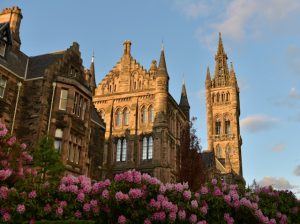
Now that we have spoken so much about the Conference itself and its thematic areas, it is time to honor the venue that was chosen to host it. The University of Glasgow is one of the most reputable higher education institutions in Europe and was rightfully selected to be the home of the EAA Glasgow 2015 Conference.
The University is public and research oriented. Founded back in 1450, the University of Glasgow has always played a major role in European intellectual life. Together with other three prominent universities – of St. Andrews, Aberdeen, and Edinburgh, it took an active part in the Scottish Enlightenment of the 18th century.
At present, the University of Glasgow is the largest higher education institution in Scotland by total enrollment. In terms of postgraduate enrollment, it is the second largest in the United Kingdom with close to 20,000 postgraduates.
Conclusion: Why Archaeology Matters
Instead of the typical conclusion, we would like to provide a more profound take on why EAA matters and why archaeology is important in general. Whereas we sometimes tend to see the lessons of archaeology as way too removed from our contemporary life, this cannot be farther from the truth. Understanding, contextualizing, and preserving history’s legacy impacts both our present and the future.
Archaeology makes numerous contributions to our contemporary life. It also impacts other scientific disciplines and helps make valuable discoveries. By researching and analyzing who we were and where we came from, we learn to value how far along we have come and what we have become. We can also use our knowledge from the past to make better, more informed decisions for the future.
One of the most intriguing definitions of archaeology says that it is a science that reveals buried truths by scrutinizing and analyzing evidence in ways that other sciences may overlook. What is more, it covers the entire spectrum of human behavior and gives it meaning and context, unlike any other field. Thus, it provokes a never-ending series of questions.
When it comes to education, archaeology has the power to nurture more engaged, intellectual, and globally oriented citizens. It is very important to note that – unlike written history – archaeology is not tied to national boundaries, ethnicity, or other sources of belonging. This makes it devoid of biases and helps it become a truly universal field, where the experience of every human matters.
With that said, it is glaringly obvious why events like the EAA Glasgow 2015 Conference are so needed and important. They help us advance the science of archaeology and make it more appealing to larger audiences. Conferences of this kind foster expert dialogue, research, and networking. They also present a fresh look at the work that has already been done and inspire new streams of thought alongside groundbreaking visions and ideas.
We are very grateful to the EAA for organizing the 2015 conference in Glasgow, and we look forward to more such events. The lessons learned will stay with us for the future and will guide our efforts to create a better tomorrow.


